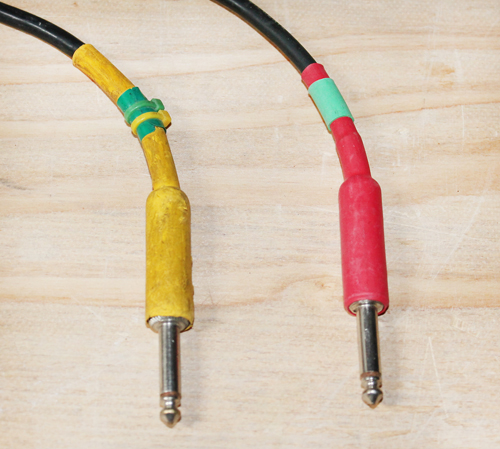
Loudspeaker cables can be loomed together, allowing lines for high packs and subs to be run at the same time. Better is using a multi-conductor cable to run more than one loudspeaker line.
For example, the Cable Cube COMBO II adaptor box from Gear Box Pro breaks out a single NL8 Neutrik Speakon connector into four Speakon NL2 connectors, meaning only one cable is needed for a group of four loudspeakers.
For larger systems, standard 19-pin lighting cable can be deployed with fan-outs to connect amp racks with loudspeaker arrays. The LPA-BO100L-6-NL4 from Lex is a fan-out assembly that converts 19-pin to four Speakon NL4s.
Immediately after all cables are run at a show, test each line before taping anything down. It’s really a pain to have to pull up yards of gaff tape to get to a bad cable.
And don’t skimp on the tape. Make sure any cables that need to be taped down are securely taped down. You don’t want to create a trip hazard by trying to save a dollar’s worth of tape. Always use gaffers tape – not duct or masking tape. It holds better and won’t leave a sticky residue on the floor, or more importantly on your cables.
If you must run a cable onstage where people might step on it, tape it down securely and cover the cable with a rug or rubber mat. And tape all around the perimeter of the rug or mat so it won’t slip. Cables running in higher traffic areas should be covered by cable ramps so they’re protected.

Finally, secure wrapped cables. Some folks tie a half hitch in the cable, while others like to use Velcro straps. I attach a piece of theater curtain tie-line at the male end of my XLRs and at one end of my loudspeaker cables so anyone can easily secure the cable.
While they’re not glamorous, cables are absolutely indispensible. Use them correctly, protect them, and don’t allow them to compromise the show. Keeping cables organized makes every event run more smoothly and is a hallmark of professional stagecraft.
Craig Leerman is senior contributing editor for ProSoundWeb and Live Sound International, and is also the owner of Tech Works, a production company based in Las Vegas.
